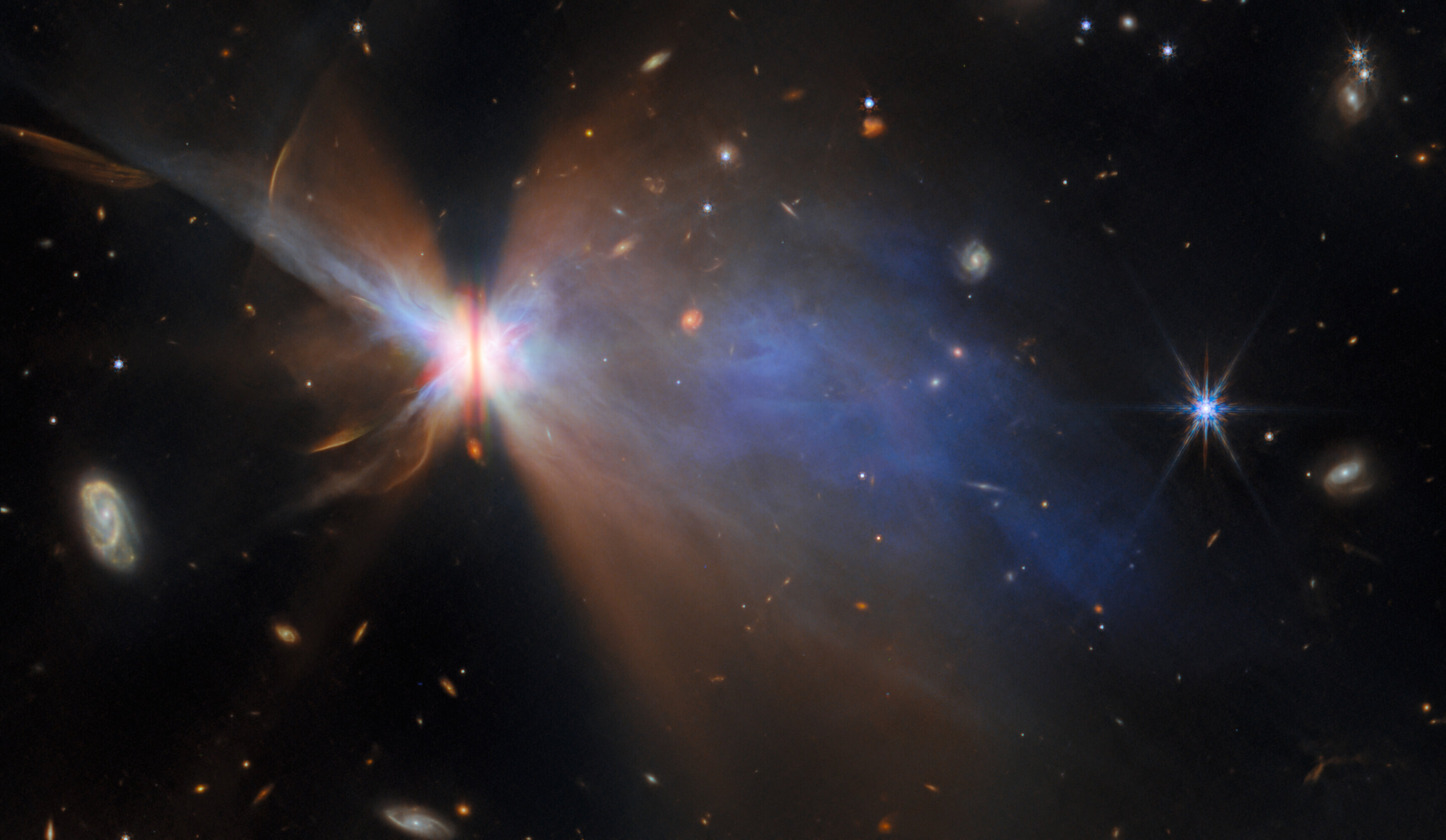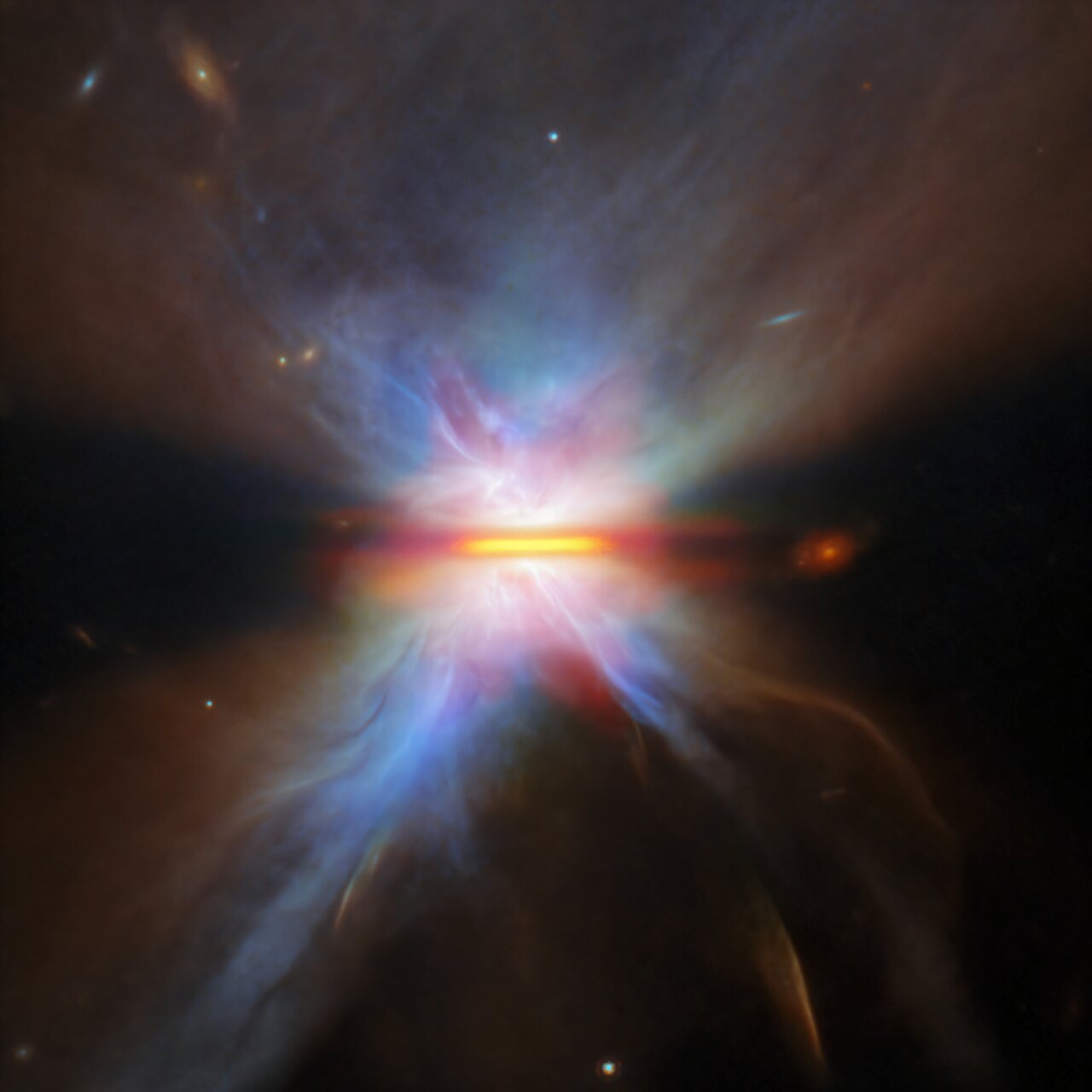Follow us on Google News (click on ☆)
Located about 525 light-years away, in the Taurus region where young stars are forming, is the object IRAS 04302+2247. This disk appears edge-on, like a thin dark band of gas and dust. This particular orientation allows researchers to study its thickness and see how dust grains, essential for planet formation, accumulate toward the center. The disk extends over 65 billion kilometers (about 40 billion miles), well beyond the size of our Solar System.

View of the planet-forming disk IRAS 04302+2247 by Webb.
Credit: ESA/Webb, NASA & CSA, M. Villenave et al.
Unlike "top-down" views, which reveal rings or spirals, this side-on observation highlights the thickness of the disk, a key parameter for understanding how efficiently dust clumps together and eventually gives rise to planets. To obtain these images, astronomers combined data from Webb's Near-Infrared Camera (NIRCam) and Mid-Infrared Instrument (MIRI), enhanced by optical observations from the Hubble Space Telescope. This mix of wavelengths allows tracking the size and distribution of dust grains with unmatched precision.
On either side of the disk, two reflection nebulae appear. Their symmetrical shape, reminiscent of butterfly wings, results from the light of the central star being reflected by the surrounding gas and dust. These structures are direct witnesses to the material exchanges accompanying the star's growth, with jets and gas flows being ejected into space.
This work is part of the Webb observation program GO #2562, led by F. Ménard and K. Stapelfeldt, which focuses on four similar disks. The goal is to better understand how dust evolves and transforms in the early stages of planet formation. These observations provide valuable clues about what happened 4.5 billion years ago, when the Sun and the planets of the Solar System began to emerge.

Detail of IRAS 16594-4656 captured by Webb, showing a bright central region crossed by a dark line of dust, with symmetrical lobes of glowing gas.
Credit: ESA/Webb, NASA & CSA, M. Villenave et al.
Protoplanetary disks: cradles of planets
A protoplanetary disk is a large structure of gas and dust surrounding a newborn star. It forms when material from an interstellar cloud collapses under gravity, flattening into a rotating disk shape.
Inside, dust grains stick together, gradually forming larger bodies called planetesimals, the building blocks of future planets. This process, called accretion, depends on many factors such as temperature, material density, and turbulence in the disk.
Studying objects like IRAS 04302 allows astronomers to compare different disks and identify what is common to all or specific to certain types of stars. Webb's infrared instruments are particularly well-suited, as they can penetrate clouds of dust that are opaque in visible light, thus revealing details otherwise invisible.